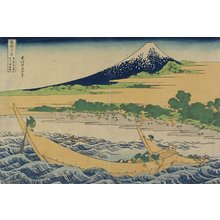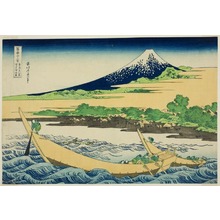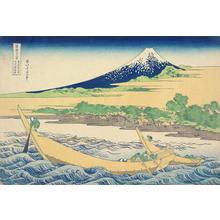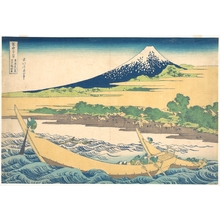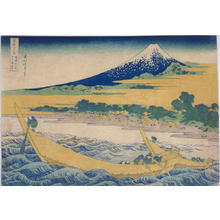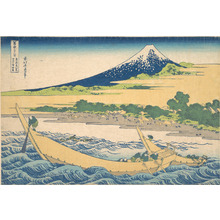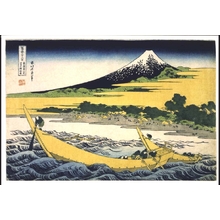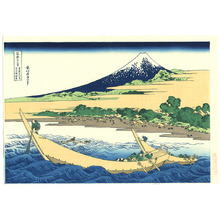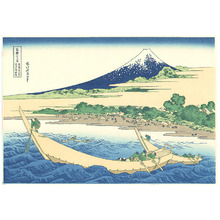絵師: 葛飾北斎
作品名: Tago-no-ura near Ejiri on the Tökaidö Road
日付: c. 1830-1834
詳細: 詳細情報...
情報源:
ホノルル美術館
浮世絵(全 5,435 件)を表示...
画題等:
Ejiri is located on the west side of Shimizu’s harbor in present-day Shizuoka prefecture. From a viewpoint in mid-bay, Hokusai looks at Fuji across the long expanse of the beach of Tago (Tago no ura), at the mouth of the Fuji River. Fuji rises to the north, and the beach is backed by the famous pine groove of Miho (Miho no Matsubara). One of the most celebrated scenic spots on the Tökaidö Road, it has been mentioned in poems since ancient times. Tago was also famous for its salt flats. In this print, tiny figures work in them against the dramatic backdrop of snow-covered, towering Fuji. In the foreground, two boats pull through the choppy sea. (The Asian Art Museum of San Francisco, HOKUSAI AND HIROSHIGE – Great Japanese Prints from the James A. Michener Collection, Honolulu Academy of Arts: The Asian Art Museum of San Francisco, 1998 Page 82. Cat. 33) ***************** Ejiri is located on the west side of the harbor at Shimizu in present-day Shizuoka prefecture. Tago was famous not only for its splendid view of Mount Fuji, but also for its salt fields; tiny figures can be seen raking for salt on the shore. Tago’s scenic beauty has been celebrated in poetry for centuries, and one well-known classical poem reads: From the coast of Tago I go out, look back, and see The pure white peak. On Fuji’s lofty heights Snow has fallen. The bokashi gradation of blue in the sky, created during the printing process, echoes the blue in the water and the blue of Mount Fuji, unifying the different planes of the composition. The traditional stylized clouds create a misty atmosphere that frames this exceptional depiction of the mountain. “Hokusai’s Summit: Thirty-six Views of Mount Fuji” (09/24/2009-01/06/2010) ******************************
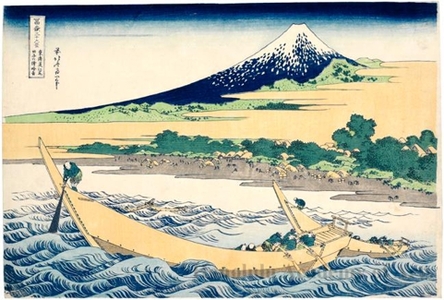
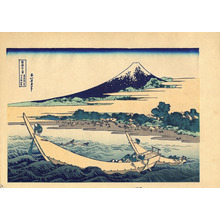

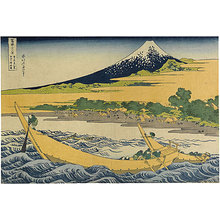


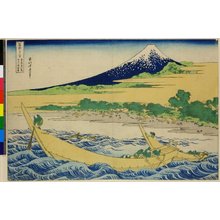
![葛飾北斎: Tokaido Ejiri Tago-no-ura ryakuzu 東海道江尻田子の裏略ズ (Simplified View, Tago Beach, [near] Ejiri on the Tokaido Highway) / Fugaku sanju-rokkei 冨嶽三十六景 (Thirty-Six Views of Mt Fuji) - 大英博物館 葛飾北斎: Tokaido Ejiri Tago-no-ura ryakuzu 東海道江尻田子の裏略ズ (Simplified View, Tago Beach, [near] Ejiri on the Tokaido Highway) / Fugaku sanju-rokkei 冨嶽三十六景 (Thirty-Six Views of Mt Fuji) - 大英博物館](https://data.ukiyo-e.org/bm/thumbs/AN00581929_001_l.jpg)
